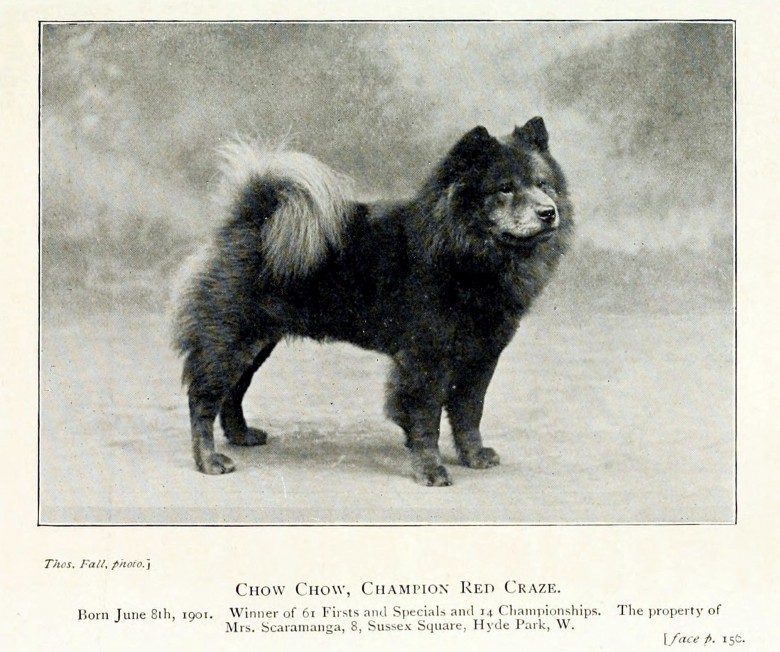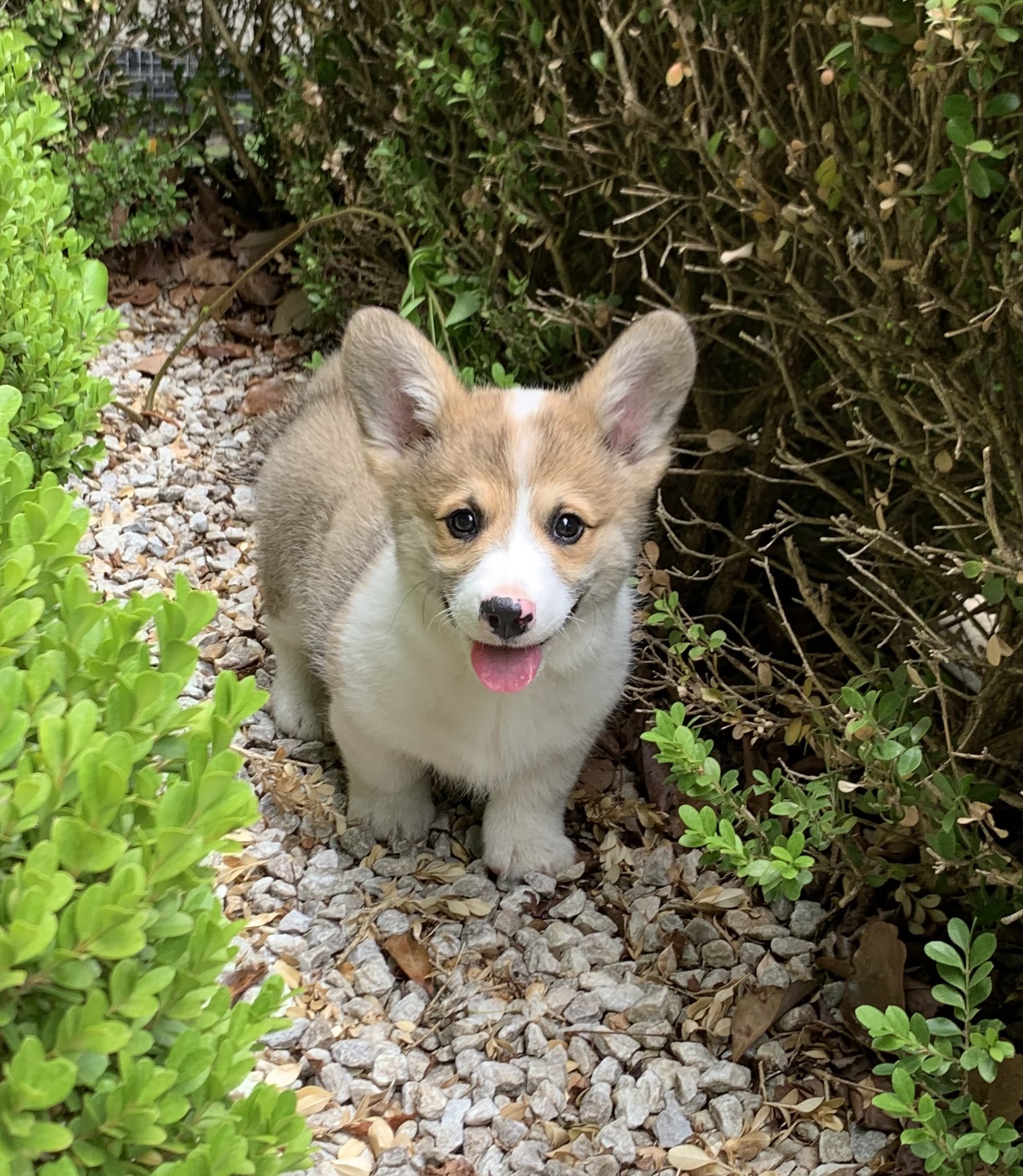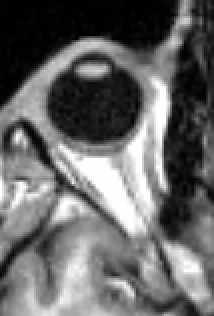|
Persistent Pupillary Membrane
Persistent pupillary membrane (PPM) is a condition of the eye involving remnants of a fetal membrane that persist as strands of tissue crossing the pupil. The pupillary membrane in mammals exists in the fetus as a source of blood supply for the lens. It normally atrophies from the time of birth to the age of four to eight weeks. PPM occurs when this atrophy is incomplete. It generally does not cause any symptoms. The strands can connect to the cornea or lens, but most commonly to other parts of the iris. Attachment to the cornea can cause small corneal opacities, while attachment to the lens can cause small cataracts. Using topical atropine to dilate the pupil may help break down PPMs. In dogs, PPM is inherited in the Basenji but can occur in other breeds such as the Pembroke Welsh Corgi, Chow Chow, Mastiff, and English Cocker Spaniel. It can also be observed in cats, horses, and cattle Cattle (''Bos taurus'') are large, domesticated, cloven-hooved, herbivores. The ... [...More Info...] [...Related Items...] OR: [Wikipedia] [Google] [Baidu] |
Human Eye
The human eye is a sensory organ, part of the sensory nervous system, that reacts to visible light and allows humans to use visual information for various purposes including seeing things, keeping balance, and maintaining circadian rhythm. The eye can be considered as a living optical device. It is approximately spherical in shape, with its outer layers, such as the outermost, white part of the eye (the sclera) and one of its inner layers (the pigmented choroid) keeping the eye essentially light tight except on the eye's optic axis. In order, along the optic axis, the optical components consist of a first lens (the cornea—the clear part of the eye) that accomplishes most of the focussing of light from the outside world; then an aperture (the pupil) in a diaphragm (the iris—the coloured part of the eye) that controls the amount of light entering the interior of the eye; then another lens (the crystalline lens) that accomplishes the remaining focussing of light into ... [...More Info...] [...Related Items...] OR: [Wikipedia] [Google] [Baidu] |
Atropine
Atropine is a tropane alkaloid and anticholinergic medication used to treat certain types of nerve agent and pesticide poisonings as well as some types of slow heart rate, and to decrease saliva production during surgery. It is typically given intravenously or by injection into a muscle. Eye drops are also available which are used to treat uveitis and early amblyopia. The intravenous solution usually begins working within a minute and lasts half an hour to an hour. Large doses may be required to treat some poisonings. Common side effects include a dry mouth, large pupils, urinary retention, constipation, and a fast heart rate. It should generally not be used in people with angle closure glaucoma. While there is no evidence that its use during pregnancy causes birth defects, that has not been well studied. It is likely safe during breastfeeding. It is an antimuscarinic (a type of anticholinergic) that works by inhibiting the parasympathetic nervous system. Atropine occurs n ... [...More Info...] [...Related Items...] OR: [Wikipedia] [Google] [Baidu] |
Cattle
Cattle (''Bos taurus'') are large, domesticated, cloven-hooved, herbivores. They are a prominent modern member of the subfamily Bovinae and the most widespread species of the genus ''Bos''. Adult females are referred to as cows and adult males are referred to as bulls. Cattle are commonly raised as livestock for meat (beef or veal, see beef cattle), for milk (see dairy cattle), and for hides, which are used to make leather. They are used as riding animals and draft animals ( oxen or bullocks, which pull carts, plows and other implements). Another product of cattle is their dung, which can be used to create manure or fuel. In some regions, such as parts of India, cattle have significant religious significance. Cattle, mostly small breeds such as the Miniature Zebu, are also kept as pets. Different types of cattle are common to different geographic areas. Taurine cattle are found primarily in Europe and temperate areas of Asia, the Americas, and Australia. Zebus (also ... [...More Info...] [...Related Items...] OR: [Wikipedia] [Google] [Baidu] |
Horse
The horse (''Equus ferus caballus'') is a domesticated, one-toed, hoofed mammal. It belongs to the taxonomic family Equidae and is one of two extant subspecies of ''Equus ferus''. The horse has evolved over the past 45 to 55 million years from a small multi-toed creature, ''Eohippus'', into the large, single-toed animal of today. Humans began domesticating horses around 4000 BCE, and their domestication is believed to have been widespread by 3000 BCE. Horses in the subspecies ''caballus'' are domesticated, although some domesticated populations live in the wild as feral horses. These feral populations are not true wild horses, as this term is used to describe horses that have never been domesticated. There is an extensive, specialized vocabulary used to describe equine-related concepts, covering everything from anatomy to life stages, size, colors, markings, breeds, locomotion, and behavior. Horses are adapted to run, allowing them to quickly escape predators, and po ... [...More Info...] [...Related Items...] OR: [Wikipedia] [Google] [Baidu] |
English Cocker Spaniel
The English Cocker Spaniel is a breed of gun dog. It is noteworthy for producing one of the most varied numbers of pups in a litter among all dog breeds. The English Cocker Spaniel is an active, good-natured, sporting dog standing well up at the withers and compactly built. There are "field" or "working" cockers and "house" cockers. It is one of several varieties of spaniel and is the foundation of its American cousin, the American Cocker Spaniel. The English Cocker is closer to the working-dog form of the Field Spaniel and the English Springer Spaniel. Outside the US, the breed is usually known simply as the Cocker Spaniel, as is the American Cocker Spaniel within the US. The word ''cocker'' is commonly held to stem from their use to hunt woodcocks. The breed can have litters of anywhere from 3 to 12 puppies. History Spaniel type dogs have been found in art and literature for almost 500 years. Initially, spaniels in England were divided among land spaniels and water ... [...More Info...] [...Related Items...] OR: [Wikipedia] [Google] [Baidu] |
English Mastiff
The English Mastiff, or simply the Mastiff, is a British dog breed of very large size. Likely descended from the ancient Alaunt and Pugnaces Britanniae, with a significant input from the Alpine Mastiff in the 19th century. Distinguished by its enormous size, massive head, short coat in a limited range of colours, and always displaying a black mask, the Mastiff is noted for its gentle and loving nature. The lineage of modern dogs can be traced back to the early 19th century, but the modern type was stabilised in the 1880s and refined since. Following a period of sharp decline, the Mastiff has increased its worldwide popularity. Throughout its history the Mastiff has contributed to the development of a number of dog breeds, some generally known as mastiff-type dogs or, confusingly, just as "mastiffs". It is the largest living canine, outweighing the wolf by up to 50 kg (110 lbs) on average. Appearance With a massive body, broad skull and head of generally square appearance, it ... [...More Info...] [...Related Items...] OR: [Wikipedia] [Google] [Baidu] |
Chow Chow
The Chow Chow is a spitz-type of dog breed originally from northern China. The Chow Chow is a sturdily built dog, square in profile, with a broad skull and small, triangular, erect ears with rounded tips. The breed is known for a very dense double coat that is either smooth or rough. The fur is particularly thick in the neck area, giving it a distinctive ruff or mane appearance. The coat may be shaded/self-red, black, blue, cinnamon/fawn, or cream. History The Chow Chow has been identified as a basal breed that predates the emergence of the modern breeds in the 19th Century. One writer proposed that the Chow Chow originated in China 2,000 years ago or possibly originated in Arctic Asia 3,000 years ago which migrated to Mongolia, then to China. One Chinese legend mentions large war dogs from Central Asia that resembled black-tongued lions. One Chinese ruler was said to own 5,000 Chows. The Chinese also used Chows to pull dog sleds through swampy terrain, and this was r ... [...More Info...] [...Related Items...] OR: [Wikipedia] [Google] [Baidu] |
Pembroke Welsh Corgi
The Pembroke Welsh Corgi (; Welsh for "dwarf dog") is a cattle herding dog breed that originated in Pembrokeshire, Wales. It is one of two breeds known as a Welsh Corgi. Pembroke Welsh Corgis descended from the Spitz family of dogs. The other is the Cardigan Welsh Corgi, which descend from the Teckel family of dogs, which also produced the Dachshund. Pembroke Welsh Corgis are famous as the preferred breed of Queen Elizabeth II, who owned more than 30 Royal corgis during her reign. Although these dogs have been favoured by British royalty for more than seventy years, among the British public they have recently fallen into decline in terms of popularity and demand. However, they remain very popular in the United States. Cities such as New York, Boston, Los Angeles, and San Francisco hold annual "Corgi Meetups" in which hundreds of dogs and their owners congregate to spend the day. The Pembroke Welsh Corgi has been ranked 11th in Stanley Coren's ''The Intelligence of Dogs'', wh ... [...More Info...] [...Related Items...] OR: [Wikipedia] [Google] [Baidu] |
Basenji
The Basenji ( /bəˈsɛndʒi/) is a breed of hunting dog. It was bred from stock that originated in central Africa. The Fédération Cynologique Internationale places the breed in the Spitz and primitive types. The Basenji produces an unusual yodel-like sound, due to its unusually shaped larynx. This trait also gives the Basenji the nickname the 'barkless dog.' Basenjis share many distinctive traits with pariah dog types. Basenjis come into estrus only once annually similar to dingoes, New Guinea singing dogs and Tibetan Mastiffs, when compared with other dog breeds which may have two or more breeding seasons each year. Basenji lack a distinctive odor, and are prone to howls, yodels, and other vocalizations over the characteristic bark of modern dog breeds. The breed's original foundation stock came from the Democratic Republic of the Congo. Name The Azande and Mangbetu people from the northeastern Congo region describe a Basenji, in the local Lingála language, as , mea ... [...More Info...] [...Related Items...] OR: [Wikipedia] [Google] [Baidu] |
Cataract
A cataract is a cloudy area in the lens of the eye that leads to a decrease in vision. Cataracts often develop slowly and can affect one or both eyes. Symptoms may include faded colors, blurry or double vision, halos around light, trouble with bright lights, and trouble seeing at night. This may result in trouble driving, reading, or recognizing faces. Poor vision caused by cataracts may also result in an increased risk of falling and depression. Cataracts cause 51% of all cases of blindness and 33% of visual impairment worldwide. Cataracts are most commonly due to aging but may also occur due to trauma or radiation exposure, be present from birth, or occur following eye surgery for other problems. Risk factors include diabetes, longstanding use of corticosteroid medication, smoking tobacco, prolonged exposure to sunlight, and alcohol. The underlying mechanism involves accumulation of clumps of protein or yellow-brown pigment in the lens that reduces transmission of li ... [...More Info...] [...Related Items...] OR: [Wikipedia] [Google] [Baidu] |
Human Eye
The human eye is a sensory organ, part of the sensory nervous system, that reacts to visible light and allows humans to use visual information for various purposes including seeing things, keeping balance, and maintaining circadian rhythm. The eye can be considered as a living optical device. It is approximately spherical in shape, with its outer layers, such as the outermost, white part of the eye (the sclera) and one of its inner layers (the pigmented choroid) keeping the eye essentially light tight except on the eye's optic axis. In order, along the optic axis, the optical components consist of a first lens (the cornea—the clear part of the eye) that accomplishes most of the focussing of light from the outside world; then an aperture (the pupil) in a diaphragm (the iris—the coloured part of the eye) that controls the amount of light entering the interior of the eye; then another lens (the crystalline lens) that accomplishes the remaining focussing of light into ... [...More Info...] [...Related Items...] OR: [Wikipedia] [Google] [Baidu] |
Corneal Opacity
The human cornea is a transparent membrane which allows light to pass through it. The word corneal opacification literally means loss of normal transparency of cornea. The term corneal opacity is used particularly for the loss of transparency of cornea due to scarring. Transparency of the cornea is dependent on the uniform diameter and the regular spacing and arrangement of the collagen fibrils within the stroma. Alterations in the spacing of collagen fibrils in a variety of conditions including corneal edema, scars, and macular corneal dystrophy is clinically manifested as corneal opacity. The term corneal blindness is commonly used to describe blindness due to corneal opacity. Types Depending on the density, corneal opacity is graded as nebular, macular and leucomatous. Nebular corneal opacity Nebular corneal opacity is a faint opacity which results due to superficial scars involving Bowman's layer and superficial stroma. A nebular corneal opacity allows the details of the iri ... [...More Info...] [...Related Items...] OR: [Wikipedia] [Google] [Baidu] |







_PHIL_4284_lores.jpg)

